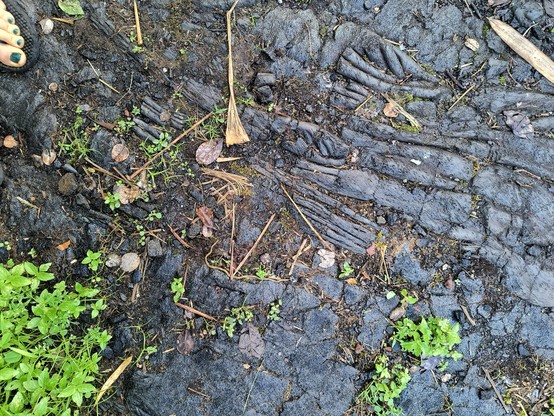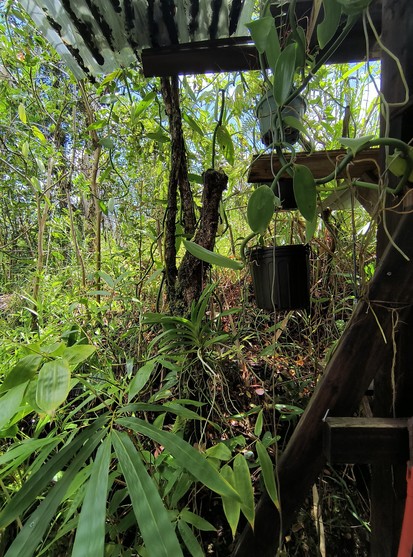Plants that live up in trees (like tree orchids or staghorn ferns) spend their lives moving up and down the vertical space of the canopy.
"Down" makes sense: you're an orchid growing on a branch up in a tree, and the branch breaks and falls. You have now moved down. But it's likely that there are other things suspended in a tangle below that, so you don't go all the way down (see pic 3).
"Up" also happens! The most basic way is that the tree you're on grows, and so you rise with it.
But you can also be picked up by a curious primate (me) and put back up in a tree (because the primate has seen your type of plant in trees, so it knows you prefer it up high)(See pic 1).
Or, if you're on a branch that's broken and suspended in the canopy, maybe a tree falls and lifts your entire branch up. Now you're back up!
"Up" also happens as orchids put out new bulbs that spread up a tree trunk (for example, see pic 2).
And "up" also happens intergenerationally. Plants like orchids have tiny seeds that can flow up on the wind (see pic 4, showing the seeds in just one seedpod of a spathoglottis plicata orchid). If they land higher in the canopy in the crook of a tree (best if the crook has accumulated some fallen leaves and moss), they can start life higher in the canopy than their parent.
Anyway, the best conditions for a tree-based plant are not necessarily at the highest or the lowest point - it's all about the overall right conditions of shade, sun, access to rain, protection from wind, safety from interfering animals, and the right amount of air for their roots.






